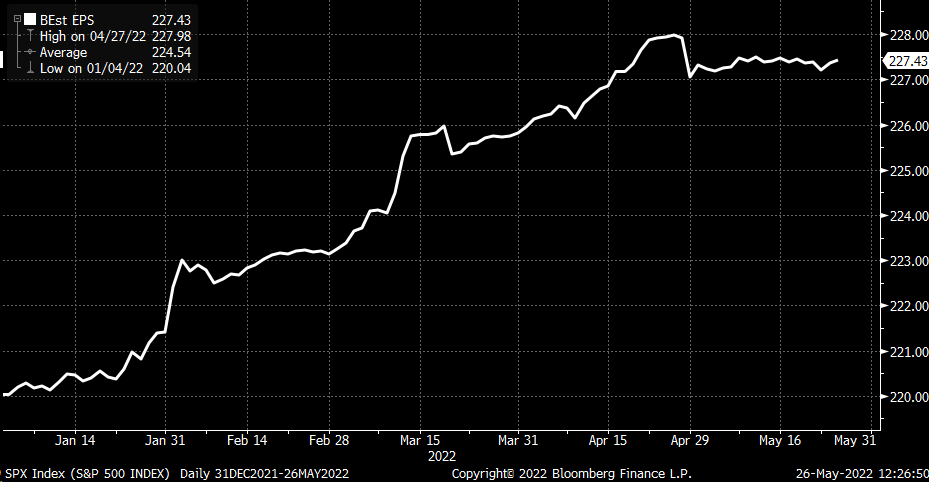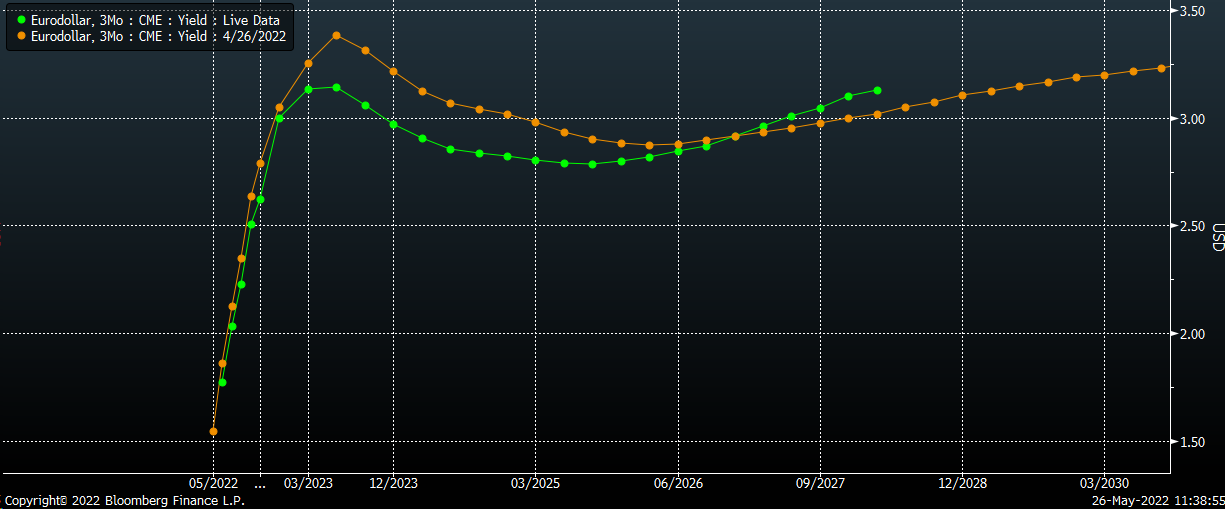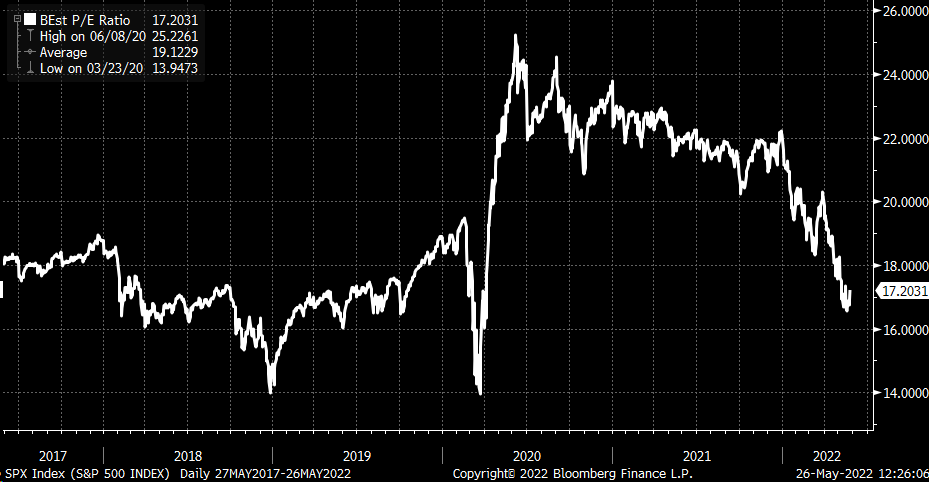Janux stock plunges after hours following mCRPC trial data
This article was written exclusively for Investing.com
As we begin moving into the summer, there may be one more shoe to drop for markets as the risk of a recession rises. After all, the US first quarter real GDP was negative, and the odds of the second quarter real GDP being negative are rising too. The Atlanta Fed GDP Now model projects second quarter growth of 1.8%. But that number has been steadily trending lower, and with inflation running at 8%, it is not out of the realm of possibilities.
These rising fears of a recession are starting to weigh on markets too. Suddenly, the dollar has moved lower, while yields, including on the 10-year note, have stopped rising. Not only that but Eurodollar and Fed Fund Futures are now pricing in fewer rate hikes and the potential for the first rate cut to come by the summer of next year.
But at this point, at least earnings estimates for the S&P 500 are still holding up, and despite the PE ratio for the index dropping sharply, the index hasn't discounted a recession. Earnings estimates are up to $227.43 per share for 2022 and higher than the roughly $220 they stood out at the start of the year. While those earnings have leveled off, they have yet to show any sign of turning lower.

The yield curve has started to shift as rates turn lower. For example, the 2-year rate has dropped from around 2.8% to about 2.5%, while the 10-Year rate has fallen to 2.8% from approximately 3.2% in the past 2-weeks. Also, the dollar index has fallen notably to around 101.80 from a high of just over 105. Potential signs indicate the market is thinking about the increased risk of a US recession and lowering expectations for future Fed rate hikes.
There have even been downward shifts in the Eurodollar futures, which project fewer rate hikes, and the potential for the Fed to start cutting rates by the middle of next year. That is a massive change from those rates that stood just a few weeks ago. On Apr. 26, the Eurodollar futures contract for June 2023 stood around 3.38%. Today, those same contracts have a rate around 3.15%, nearly an entire rate hike less. Additionally, the Eurodollar futures contracts saw the first rate cut between June and September 2023. Now those odds have shifted to the potential between March and September 2023.

All of this shifting in the currency and rate markets has undoubtedly been felt by stocks, with the PE ratio of the S&P 500 dropping sharply in 2022 due to rising rates. This has resulted in the PE ratio dropping to around 17.2 when using the 12-month forward earnings estimates, down from 22.3 at the beginning of the year.
So, while the PE multiple of the index has contracted, the earnings estimates have not changed, which leaves two big potential problems for stocks. If the US economy does enter a recession, how far do earnings estimates need to fall, and if they do drop, how much lower will the PE ratio for the market fall?

For earnings estimates to hold up GDP can be negative in real terms but must avoid turning negative in nominal terms, which is certainly possible given the current high inflation rates. Since revenue and earnings are reported in nominal terms, it may be that the damage to earnings estimates is not as severe and that the declines are shallow. In which case, the market may be able to hold up at current levels.
This makes it very tricky times to be an investor.
